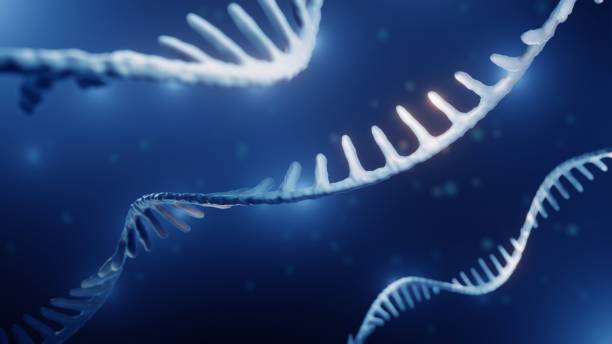The Process, Considerations, and Medical Standards of Donation
Reproductive donation plays a vital role in assisted reproduction, helping individuals and couples achieve their dream of parenthood when natural conception isn't possible. This process involves careful screening, specific medical protocols, and important ethical considerations. Understanding how the donation works can help potential donors and recipients make informed decisions about this increasingly common reproductive option.

Reproductive donation is a procedure that has helped countless individuals and couples build families when natural conception isn’t possible. Whether due to male infertility, single women seeking motherhood, or same-sex female couples wanting children, donated reproductive material provides a pathway to parenthood. This comprehensive guide explores the entire process from donation to conception, including medical requirements, storage procedures, and the ethical considerations involved.
Understanding How the Donation Process Works and Its General Purpose
Reproductive donation is the voluntary provision of genetic material by a donor to be used in artificial insemination or other fertility treatments of recipients who are not their sexual partners. The primary purpose is to help those who cannot conceive naturally to have children. This includes couples dealing with fertility issues, single women, and same-sex female couples.
The donated material can be used in several different fertility procedures. Intrauterine insemination (IUI) is the most common and straightforward method, where prepared samples are inserted directly into a woman’s uterus. In vitro fertilization (IVF) with donated material is another option, where eggs are fertilized outside the body and the resulting embryos are transferred to the uterus. Some donors provide to known recipients, such as friends or family members, while others donate anonymously through specialized banks.
Steps Involved in the Donation and Screening Process
The journey to becoming a donor involves a rigorous screening process designed to ensure the health and genetic quality of the donated material. Initially, potential donors must complete detailed questionnaires about their medical history, family background, and lifestyle. This is followed by physical examinations and comprehensive testing for infectious diseases including HIV, hepatitis, and sexually transmitted infections.
Genetic screening is equally important, with tests for common hereditary conditions like cystic fibrosis, sickle cell anemia, and Tay-Sachs disease. Psychological evaluations are also conducted to assess the donor’s mental health and motivations. Throughout this process, many potential donors are eliminated – typically only about 5% of applicants ultimately qualify to donate. Once accepted, donors commit to a regular donation schedule and must follow specific guidelines before each donation to ensure optimal quality. The entire screening process typically takes several weeks to complete.
How Donated Material is Stored and Matched for Use
After collection, samples undergo processing to optimize viability. The viable material is then mixed with a cryoprotectant solution and frozen in liquid nitrogen at temperatures around -196°C (-320°F). This cryopreservation allows the samples to remain viable for many years – potentially decades. Each sample is carefully labeled and cataloged in the bank’s database with detailed information about the donor.
The matching process between recipients and donors varies between clinics. Recipients typically browse donor profiles containing information about physical characteristics, educational background, medical history, and sometimes personal essays or audio interviews. Many banks now offer expanded profiles that include childhood photos, voice recordings, and detailed personality assessments. Recipients select donors based on their personal preferences, which might include matching physical traits with their own or their partner’s characteristics, or selecting specific educational or personality attributes they value.
Personal and Ethical Factors Considered in Donation
Both donors and recipients face significant ethical considerations when participating in reproductive donation. For donors, questions arise about their level of involvement with potential offspring – whether they wish to remain anonymous or be open to contact when children reach adulthood. They must also consider the psychological impact of potentially having multiple biological children they may never know.
Recipients must decide how much to disclose to their children about their origins. Research increasingly supports openness with donor-conceived children about their genetic heritage, and many countries are moving toward systems that allow children to access information about their donors upon reaching adulthood. Other ethical considerations include limits on how many families can use a single donor’s material to prevent inadvertent consanguinity (relationships between genetic half-siblings), and questions about fair compensation for donors without creating financial incentives that might compromise the voluntary nature of donation.
Overview of Regulations and Medical Standards in Donation
Reproductive donation regulations vary significantly worldwide, creating a complex legal landscape. In the United States, the Food and Drug Administration (FDA) oversees donor screening requirements, but there are no federal laws limiting how many children can be conceived from one donor or mandating the tracking of donor-conceived offspring. Some states have their own regulations regarding donor anonymity and parental rights.
In contrast, countries like the United Kingdom, Australia, and parts of Europe have established national registries and have eliminated anonymous donation entirely. These countries typically set strict limits on how many families can use a single donor’s material (ranging from 5-15 families depending on the country). Medical standards generally follow guidelines established by organizations like the American Society for Reproductive Medicine or equivalent bodies in other countries, which address screening protocols, record-keeping requirements, and ethical practices.
This article is for informational purposes only and should not be considered medical advice. Please consult a qualified healthcare professional for personalized guidance and treatment.
Reproductive donation represents a significant medical advancement that has helped create countless families worldwide. The careful balance of medical protocols, ethical considerations, and personal choices makes it a complex but valuable reproductive option. As societal attitudes and technologies continue to evolve, so too will the practices surrounding donation, likely with greater emphasis on transparency, genetic screening capabilities, and the rights of donor-conceived individuals to understand their genetic origins.




